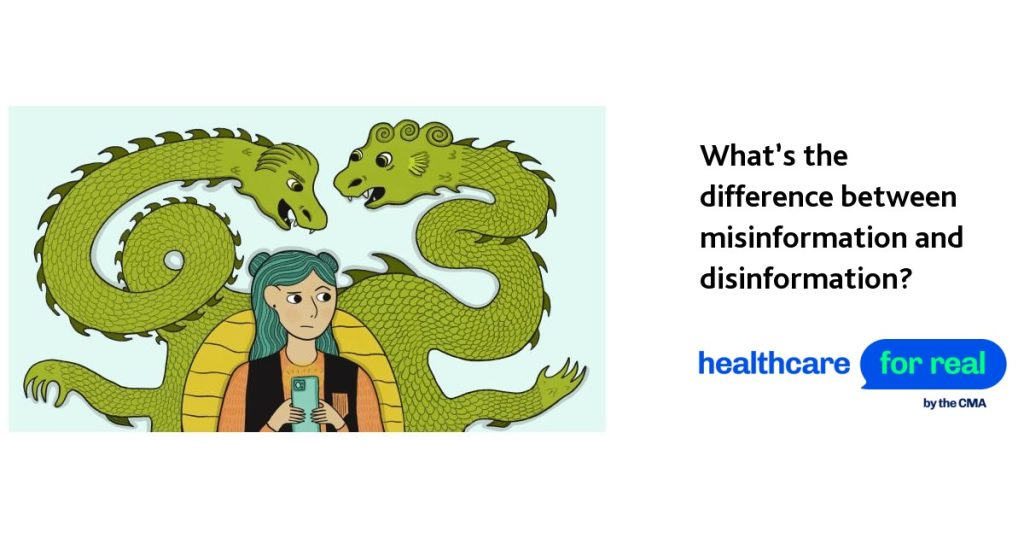The Deceptive Nature of Health Disinformation: A Threat to Well-being
In the digital age, we are constantly bombarded with information, making it challenging to distinguish fact from fiction. This is especially true in the realm of health, where misinformation and disinformation can have serious consequences. While often used interchangeably, these terms represent distinct phenomena with varying levels of harm. Misinformation refers to inaccurate information spread without malicious intent, while disinformation is deliberately fabricated and disseminated to deceive or manipulate. The distinction is crucial in understanding the threat posed by false health information and protecting ourselves from its detrimental effects.
Health disinformation is a dangerous game played by individuals and groups seeking to exploit vulnerabilities for personal gain or ideological advancement. Unlike misinformation, which might originate from honest mistakes or misunderstandings, disinformation is crafted with malicious intent. The motivations behind health disinformation are diverse and often sinister, ranging from profit-driven schemes by unscrupulous businesses selling unproven remedies to politically motivated campaigns aiming to erode public trust in established institutions like health authorities and medical professionals. This deliberate deception can lead to significant harm, influencing healthcare choices, exacerbating anxiety, and eroding trust in evidence-based medicine.
The Canadian Medical Association (CMA) has shed light on the tangible harm caused by both misinformation and disinformation in a recent survey. The findings paint a stark picture: a significant portion of Canadians are turning to online sources for medical advice, sometimes bypassing qualified healthcare professionals. This trend has resulted in adverse health outcomes for some and contributed to a rise in mental distress and anxiety related to misinformation. The survey underscores the urgency of addressing this growing problem and empowering individuals to critically evaluate health information encountered online.
Protecting oneself from the insidious influence of health disinformation demands a proactive and discerning approach. While some strategies for identifying misinformation apply, such as verifying sources and checking for conflicts of interest, disinformation requires additional vigilance. Its deceptive nature necessitates a deeper level of scrutiny.
One crucial aspect is recognizing emotional manipulation. Disinformation often employs inflammatory language and sensationalized claims designed to trigger strong emotional responses like fear, anger, or shock. This tactic exploits our natural tendency to react emotionally, bypassing rational thought and critical evaluation. Social media algorithms, which prioritize engagement, often amplify such emotionally charged content, increasing its reach and potential impact. Therefore, maintaining a critical mindset, especially when encountering information that evokes strong emotions, is paramount.
Fact-checking resources are invaluable tools in the fight against disinformation. Reputable fact-checking organizations dedicate themselves to investigating and debunking false claims circulating online. Familiarizing oneself with these services, such as MediaSmarts fact search, AFP Fact Check, and Snopes.com, provides a crucial defense against deceptive health information. Before accepting any health claim as fact, especially those encountered on social media, consulting these resources can help separate truth from falsehood.
Another key strategy is scrutinizing the sources of information. Disinformation purveyors frequently utilize fake websites or social media accounts masquerading as legitimate sources. These fabricated platforms aim to lend credibility to their deceptive narratives. A simple technique to identify such deceptive sources is to independently verify their existence and legitimacy through established search engines and Wikipedia. Checking website registration details through WHOIS can also reveal potentially suspicious ownership information or recently created domains, further raising red flags.
Furthermore, social media accounts disseminating disinformation often exhibit telltale signs. These accounts may be recently created, focusing exclusively on the specific topic of disinformation, lacking detailed ownership information, and exhibiting high activity levels with minimal genuine engagement. These characteristics suggest potential bot activity or coordinated disinformation campaigns. Recognizing these patterns can help individuals identify and avoid engaging with such deceptive accounts.
Combating health disinformation requires a collective effort. Beyond personal protective measures, actively countering the spread of false information is crucial. One vital step is to refrain from sharing suspicious content, regardless of its emotional appeal or perceived importance. Engagement with such content, even in the form of sharing or commenting with the intent to debunk it, can inadvertently boost its visibility and reach, feeding the algorithms that promote it.
Reporting suspected disinformation to social media platforms is another important action. While the effectiveness of these reporting mechanisms can vary, it remains a valuable tool to flag potentially harmful content. Even if the content isn’t immediately removed, reporting contributes to a broader effort to identify and address the issue of disinformation.
In conclusion, navigating the complex landscape of online health information requires vigilance, critical thinking, and a proactive approach to verifying information. Health disinformation poses a significant threat, exploiting vulnerabilities and manipulating emotions to spread false narratives. By understanding the tactics employed by disinformation purveyors and utilizing available resources, we can protect ourselves and others from the harmful effects of this deliberate deception, promoting informed healthcare decisions and fostering a healthier information environment.


